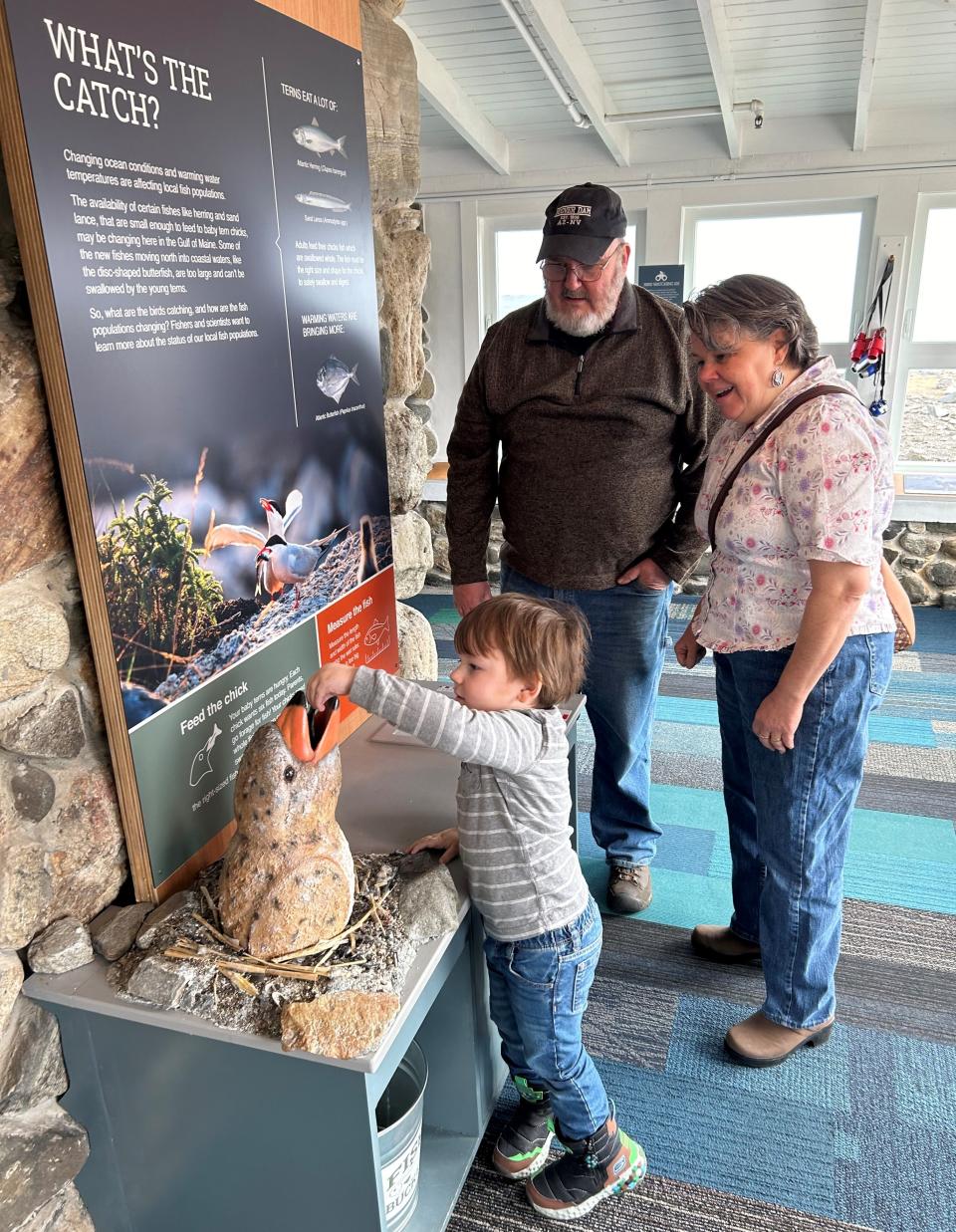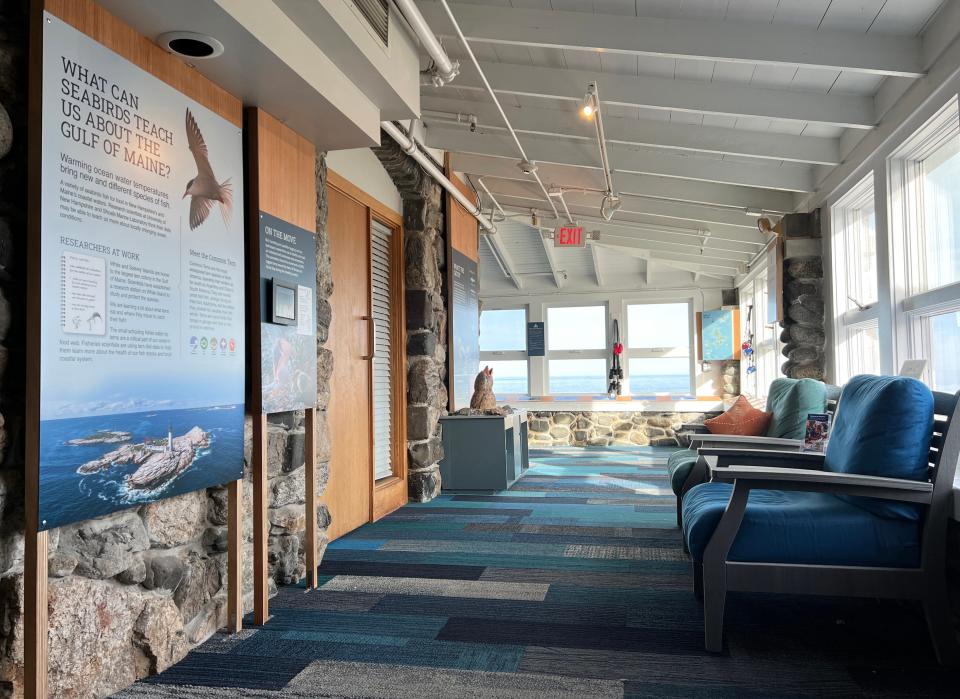Science of Seabirds exhibit opens at Seacoast Science Center in Rye
RYE — Seacoast Science Center invites you to explore its exciting new exhibition, The Science of Seabirds. Developed in partnership with Shoals Marine Laboratory and University of New Hampshire, the exhibit highlights seabird ecology research taking place on the Isles of Shoals — specifically, research on the diets of common terns that inhabit White and Seavey Islands.
What can the diets of common terns teach us? The Gulf of Maine is one of the fastest-warming regions on the planet, with 2022 data showing that it is warming faster than 97% of the world’s ocean.* As ocean temperatures rise, it can impact marine ecosystems and the distribution of species. By observing common terns, and identifying the types of fish they are consuming and where they are catching them, researchers are learning about the health of, and changes in, our fish stocks and local coastal ecosystem.
For 25 years, researchers have recorded the breeding behavior of common terns at White and Seavey Islands. This island colony has been managed and protected under New Hampshire Fish and Game since the 1990s, and is now home to the largest tern colony in the Gulf of Maine. Dr. Elizabeth (Liz) Craig, Shoals Marine Lab's director of seabird research at University of New Hampshire, and her team have stewarded this work since 2016 and continue to innovate new ways to study the foraging behavior of these dynamic seabirds.

Adult terns, and the chicks they provide for, swallow their fish whole. Craig’s research indicates that the availability of certain fishes like herring and sand lance, that are small enough to feed to baby tern chicks, may be changing. In addition, some new fishes are moving northward into our coastal waters, like the disc-shaped butterfish, that are too large to be swallowed by the young terns.
Aliya Caldwell, PhD candidate in biology at the University of New Hampshire, assists with the research by collecting data on the fish that are present in the tern’s foraging ground. Caldwell collects the fish by a large purse seine net, then identifies, counts and measures the fish caught before returning them to the sea. Data from individual banded and satellite tagged birds tells the researchers where they are hunting.
The Science of Seabirds features a short film of Craig and Caldwell working in the field and fun hands-on learning experiences that help visitors understand how sentinels of the sea, like common terns, can be indicators of marine ecosystems and ocean health. An animation of satellite-tagged birds’ movements show that they are having to travel further to find their prey. At the “What’s the Catch?” activity station, you can step into the role of a tern parent who has just returned from foraging — it is now time to feed your hungry chicks. Did you bring back the right-sized fish for your babies, or are they too big to swallow? How big, or what species, is too big?
A mock bird observation blind provides a sneak peek into what it is like to be a research scientist in the field. Here, you can experience the sights and sounds, viewing the nesting grounds on the “shoals” and observing tern behavior in a diorama. Observations on adults and chicks can be recorded on your field notes clipboard. Adjacent to the blind, just outside the windows of the Seacoast Science Center, is the rocky shoreline, Gulf of Maine, and Isles of Shoals on the horizon. On the window ledges, panels with photographs and information on the most common seabirds spotted along the coast will inspire you to grab a pair of binoculars and birdwatch in nature.

“We hope that visitors gain a greater understanding of the complexities of climate change and how it is impacting our local waters here in the Gulf of Maine by engaging in The Science of Seabirds,” said Kate Leavitt, chief program officer at Seacoast Science Center. “We hope that visitors will be eager to continue to learn, share what they have learned with others, and be inspired to take steps to conserve our coastal and ocean environment.”
The Science of Seabirds was generously sponsored by New Hampshire Sea Grant.
For hours and tickets, visit seacoastscienecenter.org.
This article originally appeared on Portsmouth Herald: Science of Seabirds exhibit opens at Seacoast Science Cente

